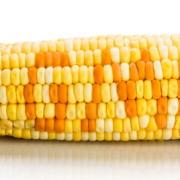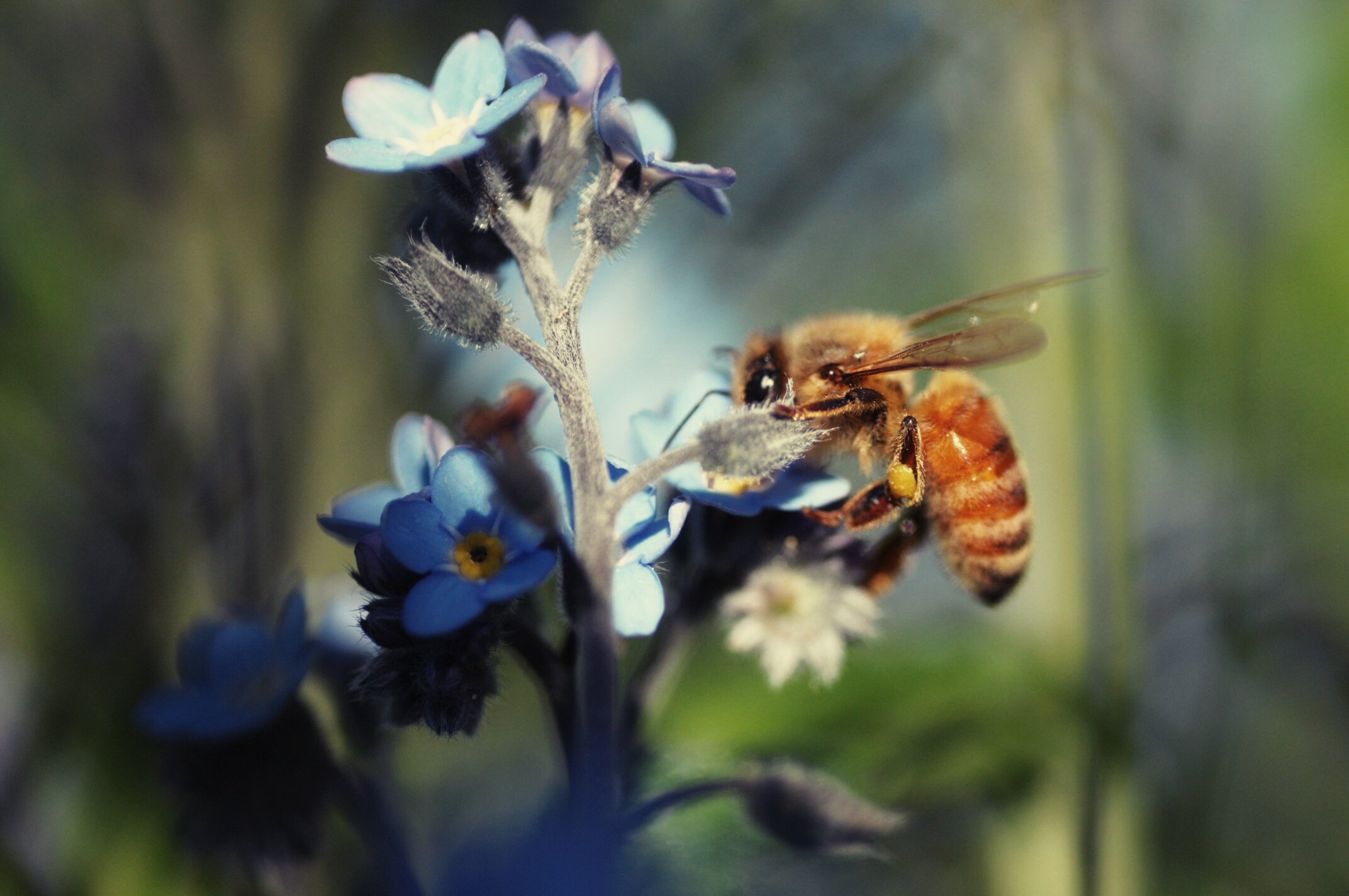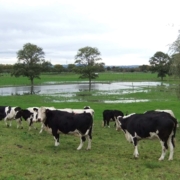Food Safety Minister Needs To Question GE Food Safety and Labelling.
Food Safety Minister Kate Wilkinson needs to ensure a comprehensive review of the labelling of genetically engineered (GE) food ingredients and GE food safety in New Zealand, now that 40 different GE food applications have been approved for use in New Zealand, including foods derived from 61 GE plant lines (1), according to the Soil & Health Association of New Zealand. Soil & Health says the latest approvals (2) have gone through despite an increase in evidence of the health risks from GE food.
GE plant lines approved include canola, corn, potato, cotton, soy bean, lucerne (alfalfa), sugarbeet, and rice. Further GE corn, cotton and soybean applications are being processed. Fourteen approved microbial-based food processing aids have also been approved with another being considered.
The Food Safety Minister’s meeting in Adelaide last Friday with the Australia New Zealand Food Regulation Ministerial Council (Ministerial Council) (3) ended with a joint communiqué (4) that included, “agreeing in principle to commission an independent, comprehensive review of food labelling law and policy.” However Soil & Health is concerned that the “independence” is unlikely to be more than a sham, and points to repeated GE food safety concerns by expert independent scientific researchers being consistently overridden.”
“Food Standards Australia and New Zealand (FSANZ), which takes direction from the Ministerial Council, has never yet turned down an application for the introduction of a genetically engineered food line, and its past so-called independent advice has invariably used research supplied by the mega food industry applicants,” said Soil & Health spokesperson Steffan Browning.
“The ‘independent panel’ to undertake the Review of Food Labelling Law and Policy will be appointed by the Ministerial Council, and if it is anything like last year’s New Zealand Food Safety Authority’s (NZFSA) so-called independent review of some of its decisions, it will be a rubber stamp for whatever convenient business focused direction the Ministerial Council wants.”
“The NZFSA review including A1-A2 milk, artificial sweetener aspartame and Campylobacter, lacked the independence required. In a fox-in-charge-of-the-henhouse scenario, the NZFSA, which was being criticised for its decisions, decided on a review, drafted the terms of reference, and then chose its own reviewer. There were no surprises in the review’s findings.”
“This exercise, as in the NZFSA review, is unlikely to be anything more than a whitewash of FSANZ practices and a Trojan horse for even more harmonisation with international food standards regulator Codex Alimentarius Commission (Codex). New Zealanders will lose even more sovereignty and control of their food supply and its safety.”
“However Soil & Health and New Zealand consumers will be blissed out if Kate Wilkinson gets in now and reviews just how many of the numerous GE food ingredients are not identified on the supermarket shelves. While she is putting that right, she should also get Mandatory Country of Origin Labelling (MCoOL) underway,” said Mr Browning. “The Minister doesn’t need the Aussies for either of those, the Aussies have MCoOL already, and any of the Minister’s staff can show what a joke GE food labelling (5) is in NZ. When did NZFSA last check on compliance of the weak rules?”
“NZFSA’s own broad based Consumer Forum voted unanimously for MCoOL, yet NZFSA continues to advise government against it, and like FSANZ advises that GE foods are safe.”
“The Indian government has just overridden its GE crop regulator and put on hold the permission for GE aubergine there, because of protest and scientific criticism. One such scientist who assessed the GE food’s applicant Monsanto-Mahyco’s molecular transformation methods, New Zealand’s Professor Jack Heinemann from the University of Canterbury, was quoted saying, “I have never seen less professionalism in the presentation and quality assurance of molecular data than in this study,”
Heinemann, who is genuinely independent, has also questioned FSANZ decisions affecting New Zealanders exposure to GE foods but again the applicant’s own substandard science was preferred by FSANZ. (6)
“Independent animal GE food feeding studies including foods approved for New Zealand are increasingly showing food safety risks, yet FSANZ has yet to turn down an application. Studies include showing multi generational infant mortalities and disorders of the reproductive, immune and blood clotting systems. This can include increased cases of pre-cancerous growths. (7,8,9)
“While buying organic food avoids exposure to GE food components, Soil & Health points out the broad consumer preference to not be eating GE foods, yet current GE labelling requirements are both weak and under-enforced,” said Mr Browning.
“Soil & Health maxim, Healthy Soil, Healthy Food, Healthy People, is a lead to a sustainable environment, safe and nutritious food, and a healthy nation. Consumers should at least have the choice and the Minister can ensure they do.”
REFERENCES
(1) http://www.foodstandards.govt.nz/standardsdevelopment/standardsworkplan.cfm
http://www.foodstandards.gov.au/foodmatters/gmfoods/gmcurrentapplication1030.cfm
(2) http://www.foodstandards.gov.au/standardsdevelopment/notificationcirculars/index.cfm
· Application A614 – Food derived from Glyphosate-tolerant Cotton Line GHB614
· Application A615 – Food derived from Insect-protected Cotton Line COT67B
(3) Membership of the Ministerial Council comprises Health Ministers from New Zealand most Australian States and Territories, the Australian Government, as well as other Ministers from related portfolios (Primary Industries, Consumer Affairs etc) where these have been nominated by their jurisdictions. All jurisdictions, except New Zealand, have nominated a Lead Minister for voting purposes. New Zealand has nominated their Minister for Food Safety as Lead Minister for voting purposes. It appears to be a one New Zealand Minister to twelve Australian ratio.
(4) http://www.alga.asn.au/newsroom/communiques/03.anzfrmc/20081024.php Comprehensive Review of Food Labelling Law and Policy. The meeting agreed in principle to commission an independent, comprehensive review of food labelling law and policy. The review will be undertaken by an independent expert panel. The expert panel will comprise prominent individuals appointed by the Ministerial Council who collectively possess knowledge and expertise in the fields of public health, regulatory, economics/public policy, law and consumer behaviour and business. The review is to be chaired by an independent public policy expert.
(5) http://www.nzfsa.govt.nz/consumers/gm-ge/gmfoods.htm
Extracts from New Zealand Food Safety Authority’s Frequently Asked Questions further below.
http://www.mfe.govt.nz/issues/organisms/regulation/food-labelling.html
http://www.foodstandards.gov.au/_srcfiles/Standard_1_5_2_GM_v112……..pdf
(6) MailScanner has detected a possible fraud attempt from “sites.google.com” claiming to be MailScanner has detected a possible fraud attempt from “sites.google.com” claiming to be http://sites.google.com/site/therightbiotechnology/free-chapter-downloads
http://www.foodstandards.gov.au/_srcfiles/Response to INBI submission on A549 DAR FINAL
(7) Doctors Warn: Avoid Genetically Modified Food, by Jeffrey M. Smith http://permaculture.org.au/2009/05/20/doctors-warn-avoid-genetically-modified-food/ Full text with references copied further below.
(8) GM food can cause cancer
Down to Earth, October 31 2009
http://downtoearth.org.in/full6.asp?foldername=20091031&filename=inv&sec_id=14&sid=1
http://www.gmwatch.org/latest-listing/1-news-items/11612-qgm-food-can-cause-cancerq-seralini
French scientist Gilles-Eric Seralini unmasked the dangers of genetically modified brinjal (aubergine), intended for commercial production in India. He shared with Savvy Soumya Misra his findings on Bt brinjal and Roundup Ready soybean(9) GE Soy Rat Feeding Study
In the group GM-soy there was a high level of pup mortality in the firstgeneration, underdevelopment of some pups, and a total absence of a second generation. These effects were not observed in the other groups. It is concluded that a diet incorporating the GM soy line 40.3.2 (approved for use in NZ) can have a negative influence on the fertility, health and posterity of rats.
The full Russian version of the paper is at:
http://www.science-education.ru/download/2009/05/2009_05_02.pdf
Full Text References (5,7)
(5) Extracts from New Zealand Food Safety Authority’s Frequently Asked Questions;
Genetically Modified Foods: Labelling and Safety
What is Genetically Modified (GM) food?
GM food is a food or ingredient that is produced from a genetically modified organism and is different from its conventional counterpart.
Genetic modification (GM) or genetic engineering (GE), is a process for altering specific genes of a living organism to change its characteristics.
Is there GM food in New Zealand?
Currently in New Zealand:
o No GM crops are grown commercially.
o No GM fruit, vegetables or meat are sold.
o Processed foods can contain GM ingredients but must be labelled accordingly.
What GM food can be sold in New Zealand?
GM ingredients can only be sold in New Zealand if Food Standards Australia and New Zealand (FSANZ) has assessed them for safety and they have been approved by the FSANZ Board and cleared by all Australian and New Zealand ministers responsible for food.
GM ingredients that are approved are derived from GM crops such as corn, canola, soybean and sugarbeet. Foods containing approved GM ingredients must then be labelled accordingly.
How do people know if what they are buying contains GM material?
Since 7 December 2002, accurate labelling is required for foods containing GM DNA or protein, or having altered characteristics (e.g., soybeans with high oleic acid content).
What does a label look like?
Where a food has to be labelled as GM, the information will usually be in the ingredients list. For example a label for bread containing a GM ingredient could look like this:
Ingredients: wheat flour, yeast, soy flour (genetically modified), water, vegetable oil, sugar, salt, emulsifiers (471, 472E), preservative (282), enzyme (amylase). If you want to find out more about a product, you can contact the manufacturer directly, often through a toll-free number on the label.
What about ‘GM-Free’ labelling?
Negative content labelling such as ‘GM-free’ labelling is not addressed as part of the labelling standard.
What foods must be labelled?
The labelling requirement covers all packaged and bulk foods. The law says:
Food that contains genetically modified DNA or protein must be labelled. This includes any food, food ingredient, food additive, food-processing aid or flavouring that contains modified DNA or protein. Flavourings that make up less than 0.1% of a food are exempt from this requirement.
Food that has altered characteristics as a result of genetic modification must be labelled, even if no GM material is present in the finished product. For example, if soyabeans are genetically modified to produce oil that is higher in oleic acid, that oil must be labelled. Does this cover all GM ingredients all the time?
If an ingredient unintentionally contains GM material that is less than 1% of that ingredient then it does not need to be labelled. Food businesses are required to take all reasonable steps to avoid this happening. Flavourings that make up less than 0.1% of a food are also exempt from this requirement.
Why do we allow a tolerance before labelling is required?
There is an allowance for unintentional presence of GM content up to 1% before a ingredient must be labelled. This recognises that, even with the best of intentions, occasionally some cross-contamination of different foods is possible. For example, intermixing may arise from use of the same transport containers or vehicles for GM and non-GM foods or ingredients.
Does GM labelling apply to takeaways and food prepared in restaurants?
The GM labelling requirement applies to all packaged and bulk foods, but does not apply to food prepared in restaurants, cafes and takeaways. This is the same as most other food labelling requirements. If concerned, you can ask whether it contains any GM ingredients before you choose to buy it.
(7) Doctors Warn: Avoid Genetically Modified Food By Jeffrey M. Smith
Full text with references follows;
On May 19th, the American Academy of Environmental Medicine (AAEM) called on “physicians to educate their patients, the medical community, and the public to avoid GM (genetically modified) foods when possible and provide educational materials concerning GM foods and health risks.”[1] They called for a moratorium on GM foods, long-term independent studies, and labeling. AAEM’s position paper stated “Several animal studies indicate serious health risks associated with GM food,” including infertility, immune problems, accelerated aging, insulin regulation, and changes in major organs and the gastrointestinal system. They conclude, “There is more than a casual association between GM foods and adverse health effects. There is causation,” as defined by recognized scientific criteria. “The strength of association and consistency between GM foods and disease is confirmed in several animal studies.”
More and more doctors are already prescribing GM-free diets. Dr. Amy Dean, a Michigan internal medicine specialist and board member of AAEM says, “I strongly recommend patients eat strictly non-genetically modified foods.” Ohio allergist Dr. John Boyles says “I used to test for soy allergies all the time, but now that soy is genetically engineered, it is so dangerous that I tell people never to eat it.”
Dr. Jennifer Armstrong, President of AAEM, says, “Physicians are probably seeing the effects in their patients, but need to know how to ask the right questions.” World renowned biologist Pushpa M. Bhargava goes one step further. After reviewing more than 600 scientific journals, he concludes that genetically modified organisms (GMOs) are a major contributor to the sharply deteriorating health of Americans.
Pregnant women and babies at great risk
Among the population, biologist David Schubert of the Salk Institute warns that “children are the most likely to be adversely effected by toxins and other dietary problems” related to GM foods. He says without adequate studies, the children become “the experimental animals.”[2]
The experience of actual GM-fed experimental animals is scary. When GM soy was fed to female rats, most of their babies died within three weeks – compared to a 10% death rate among the control group fed natural soy.[3] The GM-fed babies were also smaller, and later had problems getting pregnant.[4]
When male rats were fed GM soy, their testicles actually changed color—from the normal pink to dark blue.[5] Mice fed GM soy had altered young sperm.[6] Even the embryos of GM fed parent mice had significant changes in their DNA.[7] Mice fed GM corn in an Austrian government study had fewer babies, which were also smaller than normal.[8]
Reproductive problems also plague livestock. Investigations in the state of Haryana, India revealed that most buffalo that ate GM cottonseed had complications such as premature deliveries, abortions, infertility, and prolapsed uteruses. Many calves died. In the US, about two dozen farmers reported thousands of pigs became sterile after consuming certain GM corn varieties. Some had false pregnancies; others gave birth to bags of water. Cows and bulls also became infertile when fed the same corn.[9]
In the US population, the incidence of low birth weight babies, infertility, and infant mortality are all escalating.
Food designed to produce toxin
GM corn and cotton are engineered to produce their own built-in pesticide in every cell. When bugs bite the plant, the poison splits open their stomach and kills them. Biotech companies claim that the pesticide, called Bt – produced from soil bacteria Bacillus thuringiensis – has a history of safe use, since organic farmers and others use Bt bacteria spray for natural insect control. Genetic engineers insert Bt genes into corn and cotton, so the plants do the killing.
The Bt-toxin produced in GM plants, however, is thousands of times more concentrated than natural Bt spray, is designed to be more toxic,[10] has properties of an allergen, and unlike the spray, cannot be washed off the plant.
Moreover, studies confirm that even the less toxic natural bacterial spray is harmful. When dispersed by plane to kill gypsy moths in the Pacific Northwest, about 500 people reported allergy or flu-like symptoms. Some had to go to the emergency room.[11],[12]
The exact same symptoms are now being reported by farm workers throughout India, from handling Bt cotton.[13] In 2008, based on medical records, Sunday India reported “Victims of itching have increased massively this year . . . related to BT cotton farming.”[14]
GMOs provoke immune reactions
AAEM states, “Multiple animal studies show significant immune dysregulation,” including increase in cytokines, which are “associated with asthma, allergy, and inflammation” – all on the rise in the US.
According to GM food safety expert Dr. Arpad Pusztai, changes in the immune status of GM animals are “a consistent feature of all the studies.”[15] Even Monsanto’s own research showed significant immune system changes in rats fed Bt corn.[16] A November 2008 by the Italian government also found that mice have an immune reaction to Bt corn.[17]
GM soy and corn each contain two new proteins with allergenic properties,[18] GM soy has up to seven times more trypsin inhibitor—a known soy allergen,[19] and skin prick tests show some people react to GM, but not to non-GM soy.[20] Soon after GM soy was introduced to the UK, soy allergies skyrocketed by 50%. Perhaps the US epidemic of food allergies and asthma is a casualty of genetic manipulation.
Animals dying in large numbers
In India, animals graze on cotton plants after harvest. But when shepherds let sheep graze on Bt cotton plants, thousands died. Post mortems showed severe irritation and black patches in both intestines and liver (as well as enlarged bile ducts). Investigators said preliminary evidence “strongly suggests that the sheep mortality was due to a toxin. . . . most probably Bt-toxin.”[21] In a small follow-up feeding study by the Deccan Development Society, all sheep fed Bt cotton plants died within 30 days; those that grazed on natural cotton plants remained healthy.
In a small village in Andhra Pradesh, buffalo grazed on cotton plants for eight years without incident. On January 3rd, 2008, the buffalo grazed on Bt cotton plants for the first time. All 13 were sick the next day; all died within 3 days.[22]
Bt corn was also implicated in the deaths of cows in Germany, and horses, water buffaloes, and chickens in The Philippines.[23]
In lab studies, twice the number of chickens fed Liberty Link corn died; 7 of 20 rats fed a GM tomato developed bleeding stomachs; another 7 of 40 died within two weeks.[24] Monsanto’s own study showed evidence of poisoning in major organs of rats fed Bt corn, according to top French toxicologist G. E. Seralini.[25]
Worst finding of all—GMOs remain inside of us
The only published human feeding study revealed what may be the most dangerous problem from GM foods. The gene inserted into GM soy transfers into the DNA of bacteria living inside our intestines and continues to function.[26] This means that long after we stop eating GMOs, we may still have potentially harmful GM proteins produced continuously inside of us. Put more plainly, eating a corn chip produced from Bt corn might transform our intestinal bacteria into living pesticide factories, possibly for the rest of our lives.
When evidence of gene transfer is reported at medical conferences around the US, doctors often respond by citing the huge increase of gastrointestinal problems among their patients over the last decade. GM foods might be colonizing the gut flora of North Americans.
Warnings by government scientists ignored and denied
Scientists at the Food and Drug Administration (FDA) had warned about all these problems even in the early 1990s. According to documents released from a lawsuit, the scientific consensus at the agency was that GM foods were inherently dangerous, and might create hard-to-detect allergies, poisons, gene transfer to gut bacteria, new diseases, and nutritional problems. They urged their superiors to require rigorous long-term tests.[27] But the White House had ordered the agency to promote biotechnology and the FDA responded by recruiting Michael Taylor, Monsanto’s former attorney, to head up the formation of GMO policy. That policy, which is in effect today, denies knowledge of scientists’ concerns and declares that no safety studies on GMOs are required. It is up to Monsanto and the other biotech companies to determine if their foods are safe. Mr. Taylor later became Monsanto’s vice president.
Dangerously few studies, untraceable diseases
AAEM states “GM foods have not been properly tested” and “pose a serious health risk.” Not a single human clinical trial on GMOs has been published. A 2007 review of published scientific literature on the “potential toxic effects/health risks of GM plants” revealed “that experimental data are very scarce.” The author concludes his review by asking, “Where is the scientific evidence showing that GM plants/food are toxicologically safe, as assumed by the biotechnology companies?”[28]
Famed Canadian geneticist David Suzuki answers, “The experiments simply haven’t been done and we now have become the guinea pigs.” He adds, “Anyone that says, ‘Oh, we know that this is perfectly safe,’ I say is either unbelievably stupid or deliberately lying.”[29]
Dr. Schubert points out, “If there are problems, we will probably never know because the cause will not be traceable and many diseases take a very long time to develop.” If GMOs happen to cause immediate and acute symptoms with a unique signature, perhaps then we might have a chance to trace the cause.
This is precisely what happened during a US epidemic in the late 1980s. The disease was fast acting, deadly, and caused a unique measurable change in the blood – but it still took more than four years to identify that an epidemic was even occurring. By then it had killed about 100 Americans and caused 5,000-10,000 people to fall sick or become permanently disabled. It was caused by a genetically engineered brand of a food supplement called L-tryptophan.
If other GM foods are contributing to the rise of autism, obesity, diabetes, asthma, cancer, heart disease, allergies, reproductive problems, or any other common health problem now plaguing Americans, we may never know. In fact, since animals fed GMOs had such a wide variety of problems, susceptible people may react to GM food with multiple symptoms. It is therefore telling that in the first nine years after the large scale introduction of GM crops in 1996, the incidence of people with three or more chronic diseases nearly doubled, from 7% to 13%.[30]
To help identify if GMOs are causing harm, the AAEM asks their “members, the medical community, and the independent scientific community to gather case studies potentially related to GM food consumption and health effects, begin epidemiological research to investigate the role of GM foods on human health, and conduct safe methods of determining the effect of GM foods on human health.”
Citizens need not wait for the results before taking the doctors advice to avoid GM foods. People can stay away from anything with soy or corn derivatives, cottonseed and canola oil, and sugar from GM sugar beets—unless it says organic or “non-GMO.” There is a pocket Non-GMO Shopping Guide, co-produced by the Institute for Responsible Technology and the Center for Food Safety, which is available as a download, as well as in natural food stores and in many doctors’ offices.
If even a small percentage of people choose non-GMO brands, the food industry will likely respond as they did in Europe—by removing all GM ingredients. Thus, AAEM’s non-GMO prescription may be a watershed for the US food supply.
International bestselling author and independent filmmaker Jeffrey M. Smith is the Executive Director of the Institute for Responsible Technology and the leading spokesperson on the health dangers of GMOs. His first book, Seeds of Deception is the world’s bestselling book on the subject. His second, Genetic Roulette: The Documented Health Risks of Genetically Engineered Foods, identifies 65 risks of GMOs and demonstrates how superficial government approvals are not competent to find most of them. He invited the biotech industry to respond in writing with evidence to counter each risk, but correctly predicted that they would refuse, since they don’t have the data to show that their products are safe.
www.ResponsibleTechnology.org,
info@responsibletechnology.org
——————————————————————————–
[1] http://www.aaemonline.org/gmopost.html
[2] David Schubert, personal communication to H. Penfound, Greenpeace Canada, October 25, 2002.
[3] Irina Ermakova, “Genetically modified soy leads to the decrease of weight and high mortality of rat pups of the first generation. Preliminary studies,” Ecosinform 1 (2006): 4–9.
[4] Irina Ermakova, “Experimental Evidence of GMO Hazards,” Presentation at Scientists for a GM Free Europe, EU Parliament, Brussels, June 12, 2007
[5] Irina Ermakova, “Experimental Evidence of GMO Hazards,” Presentation at Scientists for a GM Free Europe, EU Parliament, Brussels, June 12, 2007
[6] L. Vecchio et al, “Ultrastructural Analysis of Testes from Mice Fed on Genetically Modified Soybean,” European Journal of Histochemistry 48, no. 4 (Oct–Dec 2004):449–454.
[7] Oliveri et al., “Temporary Depression of Transcription in Mouse Pre-implantion Embryos from Mice Fed on Genetically Modified Soybean,” 48th Symposium of the Society for Histochemistry, Lake Maggiore (Italy), September 7–10, 2006.
[8] Alberta Velimirov and Claudia Binter, “Biological effects of transgenic maize NK603xMON810 fed in long term reproduction studies in mice,” Forschungsberichte der Sektion IV, Band 3/2008
[9] Jerry Rosman, personal communication, 2006
[10] See for example, A. Dutton, H. Klein, J. Romeis, and F. Bigler, “Uptake of Bt-toxin by herbivores feeding on transgenic maize and consequences for the predator Chrysoperia carnea,” Ecological Entomology 27 (2002): 441–7; and J. Romeis, A. Dutton, and F. Bigler, “Bacillus thuringiensis toxin (Cry1Ab) has no direct effect on larvae of the green lacewing Chrysoperla carnea (Stephens) (Neuroptera: Chrysopidae),” Journal of Insect Physiology 50, no. 2–3 (2004): 175–183.
[11] Washington State Department of Health, “Report of health surveillance activities: Asian gypsy moth control program,” (Olympia, WA: Washington State Dept. of Health, 1993).
[12] M. Green, et al., “Public health implications of the microbial pesticide Bacillus thuringiensis: An epidemiological study, Oregon, 1985-86,” Amer. J. Public Health 80, no. 7(1990): 848–852.
[13] Ashish Gupta et. al., “Impact of Bt Cotton on Farmers’ Health (in Barwani and Dhar District of Madhya Pradesh),” Investigation Report, Oct–Dec 2005.
[14] Sunday India, October, 26, 2008
[15] October 24, 2005 correspondence between Arpad Pusztai and Brian John
[16] John M. Burns, “13-Week Dietary Subchronic Comparison Study with MON 863 Corn in Rats Preceded by a 1-Week Baseline Food Consumption Determination with PMI Certified Rodent Diet #5002,” December 17, 2002http://www.monsanto.com/monsanto/content/sci_tech/prod_safety/fullratstu…
[17] Alberto Finamore, et al, “Intestinal and Peripheral Immune Response to MON810 Maize Ingestion in Weaning and Old Mice,” J. Agric. Food Chem., 2008, 56 (23), pp 11533–11539, November 14, 2008
[18] See L Zolla, et al, “Proteomics as a complementary tool for identifying unintended side effects occurring in transgenic maize seeds as a result of genetic modifications,” J Proteome Res. 2008 May;7(5):1850-61; Hye-Yung Yum, Soo-Young Lee, Kyung-Eun Lee, Myung-Hyun Sohn, Kyu-Earn Kim, “Genetically Modified and Wild Soybeans: An immunologic comparison,” Allergy and Asthma Proceedings 26, no. 3 (May–June 2005): 210-216(7); and Gendel, “The use of amino acid sequence alignments to assess potential allergenicity of proteins used in genetically modified foods,” Advances in Food and Nutrition Research 42 (1998), 45–62.
[19] A. Pusztai and S. Bardocz, “GMO in animal nutrition: potential benefits and risks,” Chapter 17, Biology of Nutrition in Growing Animals, R. Mosenthin, J. Zentek and T. Zebrowska (Eds.) Elsevier, October 2005
[20] Hye-Yung Yum, Soo-Young Lee, Kyung-Eun Lee, Myung-Hyun Sohn, Kyu-Earn Kim, “Genetically Modified and Wild Soybeans: An immunologic comparison,” Allergy and Asthma Proceedings 26, no. 3 (May–June 2005): 210-216(7).
[21] “Mortality in Sheep Flocks after Grazing on Bt Cotton Fields—Warangal District, Andhra Pradesh” Report of the Preliminary Assessment, April 2006, http://www.gmwatch.org/archive2.asp
[22] Personal communication and visit, January 2009.
[23] Jeffrey M. Smith, Genetic Roulette: The Documented Health Risks of Genetically Engineered Foods, Yes! Books, Fairfield, IA USA 2007
[24] Arpad Pusztai, “Can Science Give Us the Tools for Recognizing Possible Health Risks for GM Food?” Nutrition and Health 16 (2002): 73–84.
[25] Stéphane Foucart, “Controversy Surrounds a GMO,” Le Monde, 14 December 2004; referencing, John M. Burns, “13-Week Dietary Subchronic Comparison Study with MON 863 Corn in Rats Preceded by a 1-Week Baseline Food Consumption Determination with PMI Certified Rodent Diet #5002,” December 17, 2002http://www.monsanto.com/monsanto/content/sci_tech/prod_safety/fullratstudy.pdf
[26] Netherwood et al, “Assessing the survival of transgenic plant DNA in the human gastrointestinal tract,” Nature Biotechnology 22 (2004): 2.
MailScanner has detected a possible fraud attempt from “outbind:” claiming to be [27] See memos at www.biointegrity.org
[28] José Domingo, “Toxicity Studies of Genetically Modified Plants : A Review of the Published Literature,” Critical reviews in food science and nutrition, 2007, vol. 47, no8, pp. 721-733
[29] Angela Hall, “Suzuki warns against hastily accepting GMOs”, The Leader-Post (Canada), 26 April 2005.
[30] Kathryn Anne Paez, et al, “Rising Out-Of-Pocket Spending For Chronic Conditions: A Ten-Year Trend,” Health Affairs, 28, no. 1 (2009): 15-25








